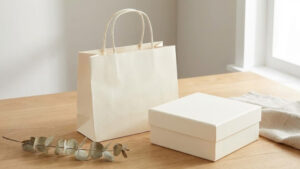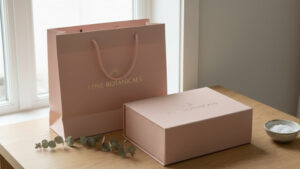Last Updated on August 6, 2025 by Packoi Team
Businesses are turning to jute as an answer to the demand for sustainable branding, where what carries your logo also carries a message about environmental responsibility. Across retail, events, and promotional campaigns, companies are rethinking the materials they use.
Single-use plastics are falling out of favor, and consumers are paying attention to packaging as much as to the product itself. In this shift, jute bags offer a rare balance. They meet practical needs, stand up to repeated use, and signal that a brand is serious about reducing its ecological impact. In this guide, we discuss the impact and usability of jute bags for business branding. Let’s discuss.
What Are Jute Bags and Why Are They Eco-Friendly?

Jute bags are made from fibers extracted from the stalks of the jute plant, primarily grown in India and Bangladesh. The plant thrives in warm, humid climates and reaches maturity in four to six months. Harvesting involves cutting the stems close to the ground and bundling them for retting, a process where the stalks are soaked in water to loosen the fibers.
Once separated, the fibers are washed, dried, and spun into coarse, strong threads suitable for weaving into fabric. From a production standpoint, jute is one of the most sustainable fibers in use today.
Environmentally, jute bags stand out for being fully biodegradable. When disposed of, the material breaks down naturally within months, leaving no toxic residues. It contrasts sharply with synthetic alternatives, which can remain in the environment for decades.
Jute is also a renewable resource. Its short growth cycle means fields can be replanted multiple times a year without long recovery periods. Another advantage is its low water footprint. Producing jute requires significantly less water than cotton or many synthetic fibers, making it a better choice for regions where water scarcity is a concern.

Additionally, jute plants absorb substantial amounts of carbon dioxide and release oxygen at a high rate, contributing positively to air quality. When they opt for jute, businesses reduce reliance on petroleum-based materials while offering customers a product that is durable, reusable, and aligned with global sustainability priorities.
Why Jute Bags Are Ideal for Business Use
For businesses, jute bags offer both practical and brand-focused advantages. They stand up to repeated use, maintain their shape under heavy loads, and convey a natural, upscale look that signals environmental awareness. So, they are a versatile choice for packaging, retail bags, and promotional giveaways.
Here are some reasons to use them:
- Strong and Durable: The coarse, tightly woven jute fiber creates a fabric that resists tearing and can carry substantial weight, making it reliable for repeated use in retail and event settings.
- Natural, Upscale Aesthetic: Jute’s textured, earthy appearance pairs well with eco-conscious branding, offering a premium alternative to synthetic packaging.
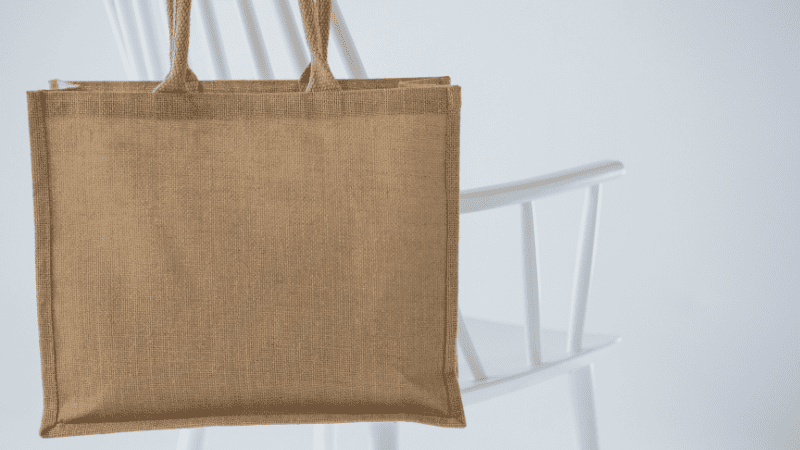
- Custom Branding Options: Logos and designs can be printed or embroidered directly onto the fabric, turning jute bags into walking advertisements that extend brand visibility.
- Versatile Applications: The material is suitable for packaging premium goods, serving as retail shopping bags, or being distributed as giveaways at trade shows and community events.
- Reusable and Eco-Friendly: Jute encourages customers to reuse the bag multiple times, reducing waste and reinforcing the business’s sustainability message.
More importantly, using jute aligns the company with environmentally responsible practices, appealing to customers who value sustainable products.
Types of Custom Jute Bags for Business
Businesses can choose from a wide range of jute bags that combine functionality with eco-friendly appeal. From jute tote bags for everyday packaging to specialized designs for events or gifts, there is a style to fit almost any branding need.
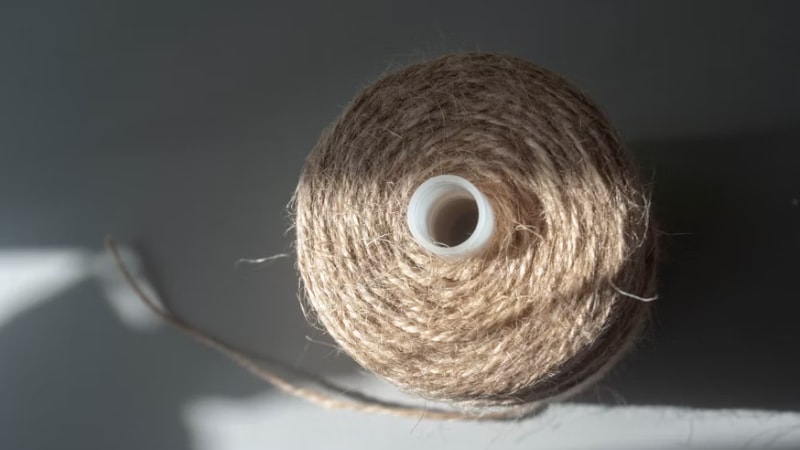
These natural fiber options provide both visual appeal and rugged durability, making them a smart investment for long-term use. Let’s look at some common types of jute bags:
- Totes for Retail Packaging: Custom jute tote bags are ideal for retail stores, offering customers a reusable bag that carries groceries, clothing, or other items while keeping your logo visible in public spaces.
- Conference or Event Bags: Businesses can choose custom burlap bags or structured jute bags for conferences, trade shows, or community gatherings, providing attendees with a functional keepsake that promotes your brand.
- Wine Bags or Specialty Pouches: Narrow jute bags designed for wine bottles or gift sets add an earthy look to organic quality products and make delivery feel premium.
- Zippered or Drawstring Pouches for Product Bundles: Small jute bags with secure closures are perfect for packaging bundled items, promotional giveaways, or limited-edition brand merchandise.
These biodegradable jute options come in multiple sizes, colors, and printing options, so companies can select what works for their business and clients. Offering blue, neutral, or custom-dyed finishes lets your brand stand out while reinforcing its commitment to sustainability.

When you use the right jute bag styles in your packaging or promotional strategy, you give customers a durable, reusable product that carries your message long after the initial delivery. The combination of natural appeal, rugged durability, and practical use makes them a valuable tool for any company focused on lasting brand impact.
Jute vs. Other Eco-Friendly Packaging Options
When selecting sustainable packaging, businesses often compare jute bags with paper, cotton, and RPET (recycled PET) alternatives. Each material has advantages, but factors like rugged durability, environmental impact, and how the brand is perceived can vary significantly.
| Material | Durability | Lifecycle Impact | Brand Perception |
|---|---|---|---|
| Jute Bags | High: withstand heavy loads and repeated use | Biodegradable, natural fiber, short growth cycle, low water use | Seen as eco-friendly, reusable, and earthy, aligning with sustainability goals |
| Paper Bags | Low: prone to tearing, limited reuse | Renewable source, but high water and energy use in production | Viewed as environmentally aware but less durable |
| Cotton Bags | Medium to high: strong, washable | Natural material, but water-intensive cultivation and processing | Perceived as premium but less resource-efficient |
| RPET Bags | High: long-lasting, resistant to damage | Made from recycled plastics, reduces landfill waste but is not biodegradable | Considered modern and resource-conscious, though linked to synthetic materials |
While paper and cotton have their place in sustainable packaging, jute offers a balance of strength, environmental benefit, and visual appeal. RPET provides long-term durability but lacks the natural and biodegradable qualities that many customers prefer. For businesses wanting packaging that stands out in both performance and perception, jute bags remain a strong contender.
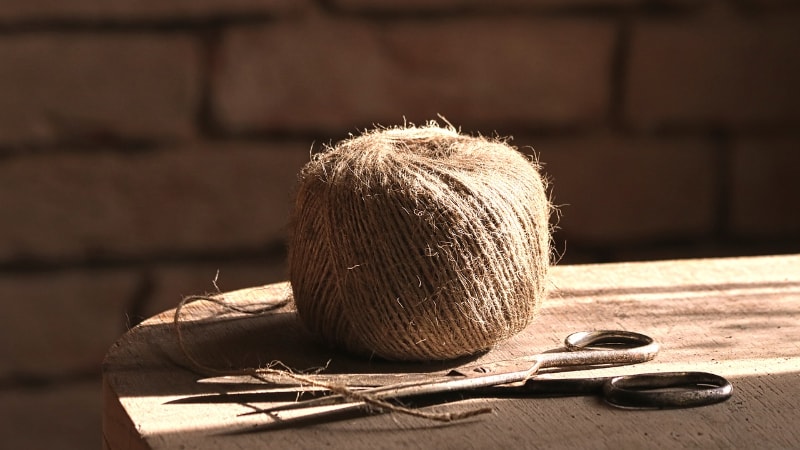
How to Design Custom Jute Bags That Elevate Your Brand
When designing custom jute bags, keep the following tips in mind for the best results. These best practices will help you keep the packaging comfortable for the customers, too.
Print and Branding Techniques
The printing method you choose for jute bags will influence how the logo appears, how long the design lasts, and how effectively it communicates your brand identity. Each technique offers distinct strengths in terms of texture, budget, and visual style, so it’s important to match the process to the intended use and audience. Here are some options:
- Screen Printing: The screen printing method applies layers of ink directly onto the jute fabric through a stencil. It works well for bold designs and solid colors, making it a cost-effective option for larger quantities of custom jute tote bags.
- Heat Transfer Printing: Designs are first printed onto a transfer medium, then applied to the bag using heat and pressure. This approach is useful for complex artwork or multi-color graphics, but may not have the same rugged durability as direct printing.

- Embroidery: Stitched thread is used to display the logo or design on the jute bag. The technique conveys a premium look and can withstand repeated use without fading.
- Combination Methods: Some businesses choose to combine printing and embroidery to add both detail and tactile appeal, especially for gift or limited-edition packaging.
Matching the printing approach to your brand image helps maintain consistency while giving customers a finished product they value and reuse.
Visual Design Tips for Maximum Impact
A well-designed jute bag carries your brand in public spaces. To make the most of the surface area, focus on designs that draw attention quickly, remain easy to recognize, and fit naturally with the rest of your marketing materials. Here’s what to do:
- Use clear, bold typography that remains legible from a distance.
- Place the logo where it will be visible when the bag is carried.
- Choose colors that contrast well with the natural tone of jute.
- Keep the design aligned with your brand’s existing style and imagery.
- Avoid overcrowding the layout with excessive elements.
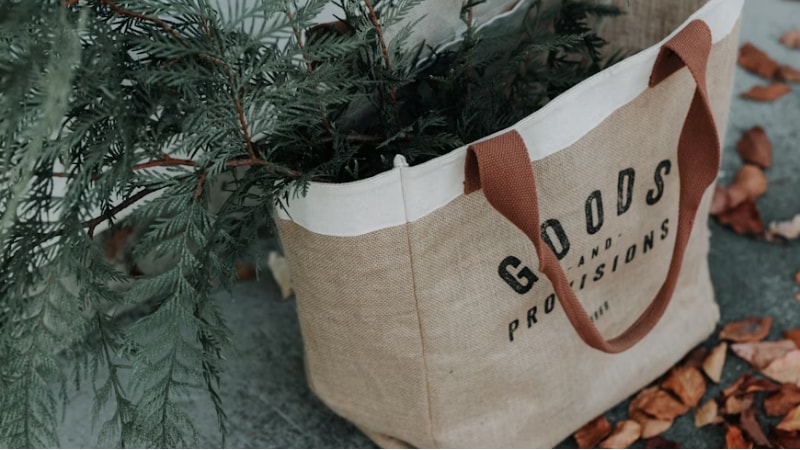
Consistency across all branded materials reinforces recognition and trust. Treat the jute bag as both a functional product and a moving advertisement to turn each use into an opportunity for long-term brand visibility.
Size, Shape, and Functionality
Choosing the right jute bag format starts with understanding the purpose. A retail store may prefer medium-sized totes that comfortably fit clothing or groceries, while an event organizer might opt for larger conference bags that hold documents, merchandise, or giveaways.
Wine retailers or specialty shops often benefit from tall, narrow designs that keep bottles secure during delivery.
Handles, gussets, and closures can greatly influence how the bag performs. Sturdy woven handles add comfort for carrying heavier items, while wide gussets increase capacity without compromising structure. Drawstring or zippered closures provide extra security, making them ideal for product bundles or promotional kits.
Balancing size, shape, and functional details ensures the jute bag is practical for customers while showcasing the brand effectively. A design that meets both user needs and visual goals is more likely to be reused.
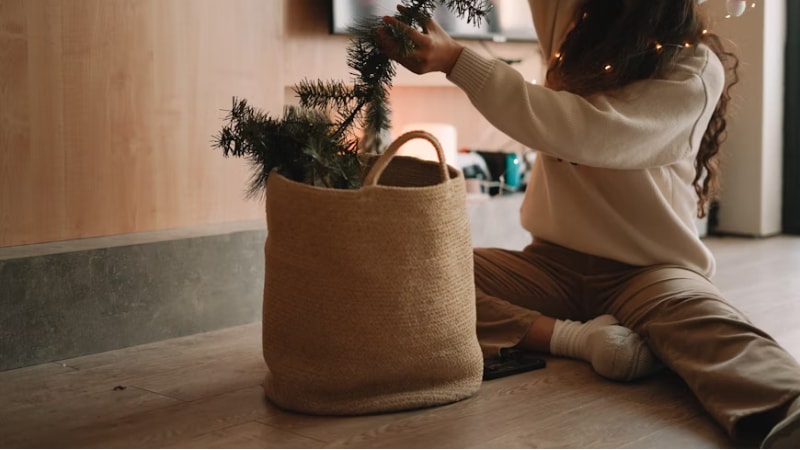
Eco-Friendly Material and Ink Choices
The sustainability of jute bags extends beyond the fabric itself. Choosing water-based or plant-based inks reduces harmful chemical runoff and maintains the bag’s biodegradable qualities. Low-impact dyes can provide vibrant colors without compromising environmental safety.
Printing processes that minimize waste and energy use further strengthen a brand’s commitment to eco-friendly practices. Highlighting these materials and ink choices in marketing or on the bag itself signals transparency to customers.
It shows that every detail, from the natural fiber to the final print, supports sustainability goals and positions the business as mindful of both product quality and environmental responsibility.
Real Brand Successes and Best Practices for Using Jute Bags
Let’s take a look at how brands use jute bags and which industries have done a great job at using them for branding and packaging.
How Businesses Effectively Use Custom Jute Bags
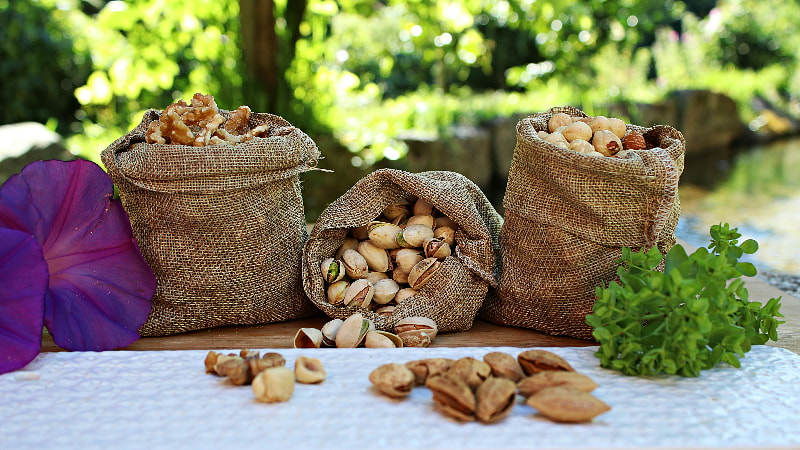
Custom jute bags are now a common branding tool in many industries. They combine durability, reusability, and a natural look, making them suitable for both retail and event applications. Here’s how different industries are using them in real-life scenarios.
- Retail Stores: They offer printed jute tote bags instead of plastic, giving customers a reusable option for carrying clothing, groceries, or home goods while keeping the brand visible.
- Event Organizers: They distribute jute conference or swag bags filled with brochures, samples, and promotional items, providing attendees with a functional keepsake.
- Food and Beverage Companies: These companies package wine, specialty foods, or gift items in narrow jute wine bags or pouches for an organic quality presentation.
- E-Commerce Brands: They include custom jute bags in limited-edition bundles or as incentives for orders above a certain quantity.
With the right design and format, a jute bag becomes a reusable asset that extends brand visibility and supports eco-friendly values.
Best Practices for Using Custom Jute Tote Bags
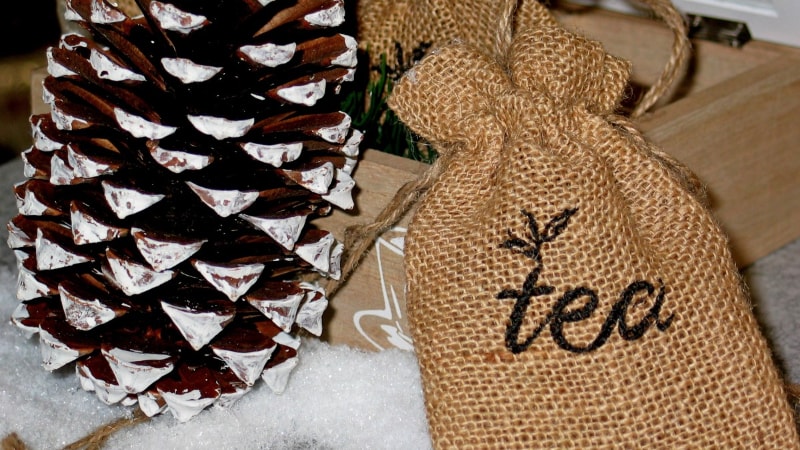
Choosing jute bags as part of a packaging or promotional strategy works best when their strengths align with the product, event, or brand message. Here’s how to use jute bags to their full potential:
- Select jute when durability and reusability are priorities.
- Match the bag size and style to its intended use.
- Store bags in a cool, dry place to prevent moisture damage.
- Clean gently to preserve the natural fiber.
- Encourage customers to reuse the bag regularly.
Thoughtful selection and care ensure the bags remain both functional and visually appealing over time.
FAQs About Custom Jute Bags
Are jute bags machine washable?
Jute bags should not be machine washed, as agitation and water saturation can weaken the natural fiber. Spot cleaning or gentle hand washing is recommended to maintain the structure and appearance.
How long do printed jute bags last?
With proper care, printed jute bags can last several years. Durability depends on usage, storage conditions, and printing method, but reinforced seams and strong handles extend their usable lifespan.
Can jute bags be fully composted?
Yes, jute bags made from untreated natural fiber are fully biodegradable and compostable. Remove any non-compostable elements, such as zippers or synthetic linings, before placing them in composting systems.
Conclusion
Jute bags combine environmental responsibility with lasting brand visibility, offering businesses a packaging choice that is both practical and impactful. By adopting sustainable, custom-printed jute for packaging or promotion, companies can reduce waste while keeping their message in constant circulation. It’s a simple shift that delivers value to both the planet and the brand.
Make the Most Out of Jute Packaging for Branding With Packoi
Ready to go green with your branding and satisfy customers? Explore our range of custom jute bags at Packoi and get your logo on a sustainable bag your customers will love. Contact us today for a quote.



